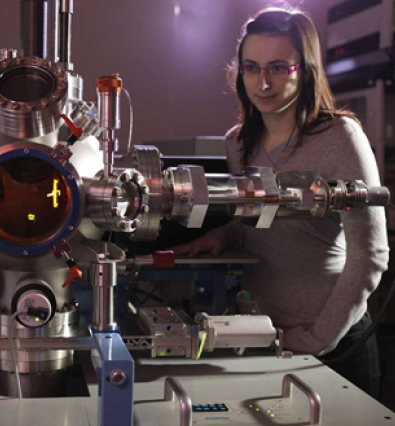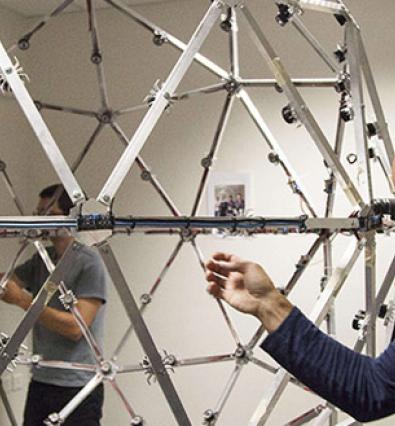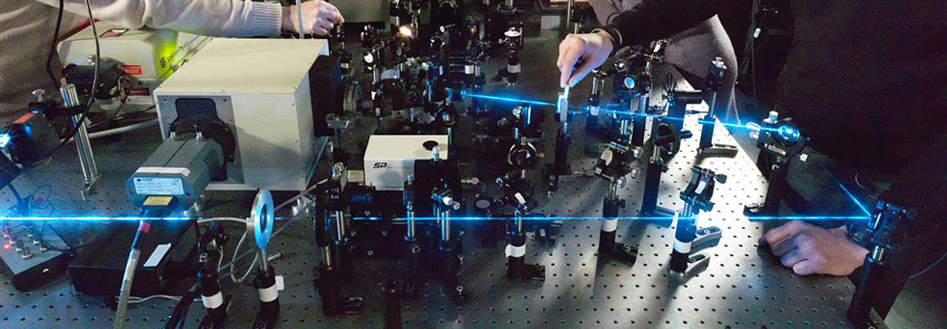
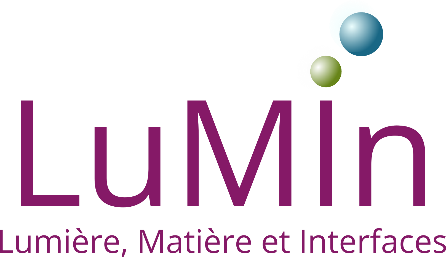
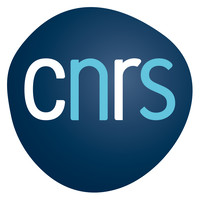
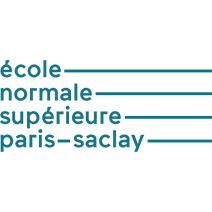

LuMIn is a new research structure devoted to light-matter interactions scaling from atoms to materials, devices and living systems at the University Paris Saclay. It aims to propose novel and original synergies at the frontiers of optical and quantum physics, device technologies, along with the exploration in-vitro and in-vivo of fundamental biological processes for a better understanding of cancer and brain disorders pathogenesis.
The core activity of this structure is based on a wide spectrum of competencies in optics (lasers, nonlinear optics, quantum physics, plasmonics), with applicative developments to the design and elaboration of micro- and nanophotonic devices (including microfluidic circuits) and to the investigation of biochemical phenomena in cells, tissues and living organisms.
LuMIn operates under the authority of four institutions: CNRS-INSIS, ENS Paris-Saclay, Université Paris-Saclay and CentraleSupélec.
RESEARCH TOPICS
DIADEMS – Diamond-Enabled Materials and Sensors
Our research focuses on applying nitrogen-vacancy (NV) centres in diamonds to sensitive magnetic measurements. During the past years, we developed two complementary techniques: nanoscale NV magnetometry using NV centres at the apex of a scanning AFM tip and wide-field diamond optical magnetometry.
Lasers and Optics
We work on several topics, with activities ranging from very fundamental studies related to the field of quantum information to the development of optoelectronic oscillators of high spectral purity, via the physics of lasers and nonlinear optics. A theme underlying most of our research topics is the study of noise, both for fundamental research and for applications. Indeed, due to strong and long-standing links with the physics group of Thales Research and Technology (TRT), we have a practice of research, whose main characteristic is to mix fundamental aspects and applications.
Ultrafast plasmonics and nanophotonics
Metal nano-objects under light irradiation exhibit remarkable optical properties associated with the plasmon resonance phenomenon. We study and exploit the interaction of ultrashort light pulses with such plasmonic nanoparticles (NPs). Associating ultrafast and broadband transient absorption spectroscopy and suited models developed for years we have been able to measure and decipher the optical response of complex nano-objects both in the stationary and transient regimes.
Nanophotonics, Materials and Spectroscopy
Recently, the Hybrid Organic Perovskites (HOP) have demonstrated to represent a “material breakthrough”, particularly for photovoltaics: the efficiency of HOP-based solar cells has progressed from 12% in 2013 to 25.5% in 2020, but also for light emitting devices: LEDs, lasers. These HOPs are considered a new semiconductor class with amazing properties still to explore. Using microphotoluminescence (micro-PL) and time-resolved PL experiments performed on high-quality monocrystals, the team studies the intrinsic properties of these HOPs. One other activity of the theme is focused on the study of the electronic and optical properties of graphene nanoribbons and quantum dots, as well as of carbon nanotubes. To do so, we use single-molecule spectroscopy tools.
Structuration and devices
This research theme is focused on the elaboration, physical and technological studies of various kinds of photonic devices, mainly made of molecular and polymeric materials. Two kinds of elaboration methods are used for device fabrication: photolithography and etching – in the Institut d’Alembert clean room – on one hand, direct laser writing in weakly absorbing materials on the other hand. Physical studies encompass theoretical and experimental emission properties in microlasers, light confinement in periodic structures, microresonators and waveguides, optical properties of single nano-objects, optical/microwave conversion. Applications can be envisioned towards optical and microwave communications, sensors and biosensors. The team is organized around five main research topics: Molecular and material engineering for nonlinear optics; Polymer-based photonic and plasmonic structures; Organic microlasers; Polymer-based optofluidic devices; Microwave photonics.
New optical methods for life science studies
This theme aims at developing new methods for various Life sciences applications, focusing on fundamental cellular processes. These methods include mainly: development of new microscopy setups, new optically active nanoprobes ‒some coupled to plasmonic nanostructures to enhance their response. The theme is also linked to clinical research through the development of new methods in optometry, in close collaboration with industrials.
Biophotonics and physiopathology of synapses
Research conducted by the members of the team « Biophotonics et Synapse Physiopathology » consists in the study of synapse biology and circuit physiology in the healthy and diseased brain. In particular, we focus on the following four objectives: (1) Exploring the roles of NMDA receptors and their co-agonists in the functioning of synapses and brain circuits; (2) Deciphering the roles of astroglia in the integration and modulation of neuronal information; (3) Exploring intraneuronal transport and its link to the functioning of synapses and to brain pathologies; (4) Developing novel optical tools/methods and fluorescent probes for Neurosciences and Cell Biology (optogenetics, optopharmacology).
Fluidic and electric microsystems for life science studies
We design and fabricate microfluidic devices for the characterisation and treatment of living cells, for medical or environmental applications. The developments involve the following domains: organ on chips, virus detection, microalgae, droplet-based microcapsules for micro-thermometry, (bio)sensing and photocatalysis.
APPLICATION DOMAINS
Optoelectronics, sensors, biomedical imaging, medical diagnosis and targeted therapies, photovoltaics, ultrafast optical processing, quantum information, new microscopies, materials for optics, sustainable energies and life science.
KEY FIGURES 2022 (CentraleSupélec only)
- Faculty members and researchers: 2
- PhD student: 1
- Engineers and administrative staff: 2
- Visiting Professor: 1
- Publications: 2
ACADEMIC PARTNERS
In France:
PSL (ENS, ESPCI): LKB, RCP, LPENS, Gulliver, Institut Langevin, SIMM; SYRTE (Paris Observatory); U. de Paris: Centre des Saints-Pères, UMR_S942; Institut de la Vision, UMRS968; Institut du Cerveau; Institut Gustave Roussy: METSY; Institut National de la Transfusion Sanguine (INSERM, Paris); Sorbonne Paris Nord University: LPL, LSPM; Ecole Polytechnique: LPICM, LSI, LCM, Chaire Art&Science; Sorbonne U.: LRS, LKB, INSP, Centre de Recherche en Myologie (INSERM UMRS874); U. Gustave Eiffel, Paris-Est: ESYCOM; ISCR (Rennes), FOTON (Rennes), XLIM (Limoges), INL (Lyon), ENS Lyon, LCC (Montpellier), IMS (Bordeaux), LAAS (Toulouse), L2n (UTT, Troyes), LNCMI (Toulouse), CINaM (Marseille), CRC (Lyon), COMETE (Caen), Institut de Génétique Humaine (Montpellier), Institut Carnot de Bourgogne (Dijon).
In Europe:
U. Leipzig, MPG-MPIP Mainz, U. Würzburg, Technical U. Munich, U. des Saarlandes, Heinrich Heine U. Düsseldorf (Germany); Wroclaw U. of Technology (Poland); CNR Rome, U. degli Studi dell'Insubria (Italy); Faculty of Applied Optics, ITMO University in St Petersburg (Russia); Hetman Petro Sahaidachnyi National Army Academy, Lviv, and Inst. of Radio-Physics and Electronics of the National Academy of Sciences of Ukraine, Kharkiv (Ukraine); CMN, U. de MONS (Belgique); U. of Nottingham, Cavendish Laboratory Cambridge, Oxford University (UK), Center for Physical Sciences and Technology (Lithuania); Vrije U. Amsterdam (The Netherlands); Institute of Organic and BioChemistry, Czech Academy of Sciences (Czech Republic).
Outside Europe:
Tel-Aviv University, Bar-Ilan University and Weizmann Institute (Israel); University of South Florida, University of Georgia, Yale School of Medicine, Mount Sinai School of Medicine (USA); National Chung Cheng University, Academia Sinica, National Tsin Hua University (Taiwan); Assam University, RRI Bangalore, Indian Institute of Technology Ropar, State key laboratory of precision spectroscopy (India); Lanzhou University, Xi'an Institute of Optics and Precision Mechanics, Beijin institute of technology, Beihang University, Southeast University, HPStar Shanghai (China); Polytechnic University (Hong-Kong); Sfax, Monastir and Gafsa Universities (Tunisia); Faculty of physics, Hanoi National University of Education (Vietnam); Yonsei University (Korea); Pontificia Universidad Católica de Chile, Universidad de Chile (Chili); INRS, Montréal (Canada); Sharif U. of Technology (Iran); Univ. of Tokyo (Japan); Faculté des sciences et techniques de Tanger (Morocco)
INDUSTRIAL PARTNERS
- Attocube R&D,
- Christex,
- Essilor,
- IMSTAR,
- Institut Photovoltaique d'Île-de-France,
- Orsay Physics,
- Photonscore GmbH,
- Thales TRT,
- United Visual Researchers.
More information
Download the 2022 laboratory report HERE
CONTACTS
Website: https://www.lumin.universite-paris-saclay.fr/en
Director: Fabien Bretenaker (fabien.bretenaker[at]centralesupelec.fr)
Deputy Director: Bruno Palpant (bruno.palpant[at]centralesupelec.fr)


